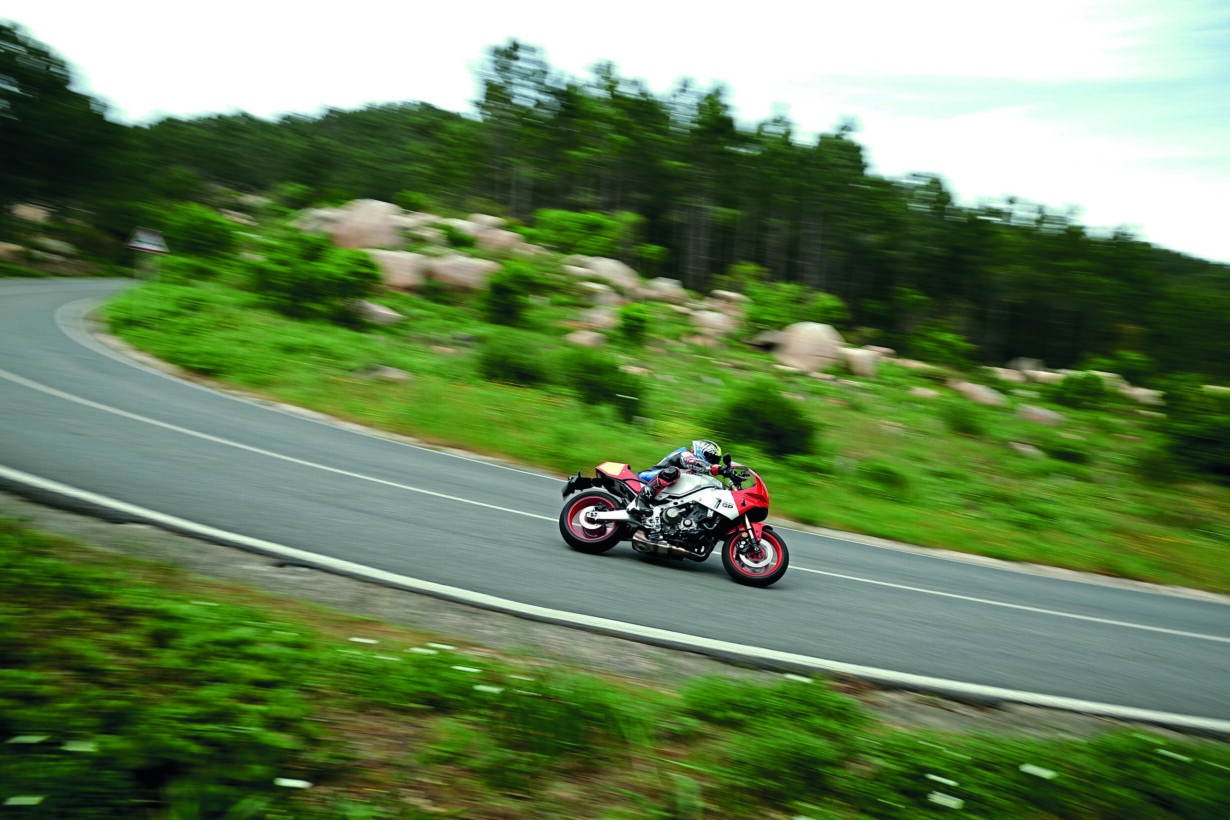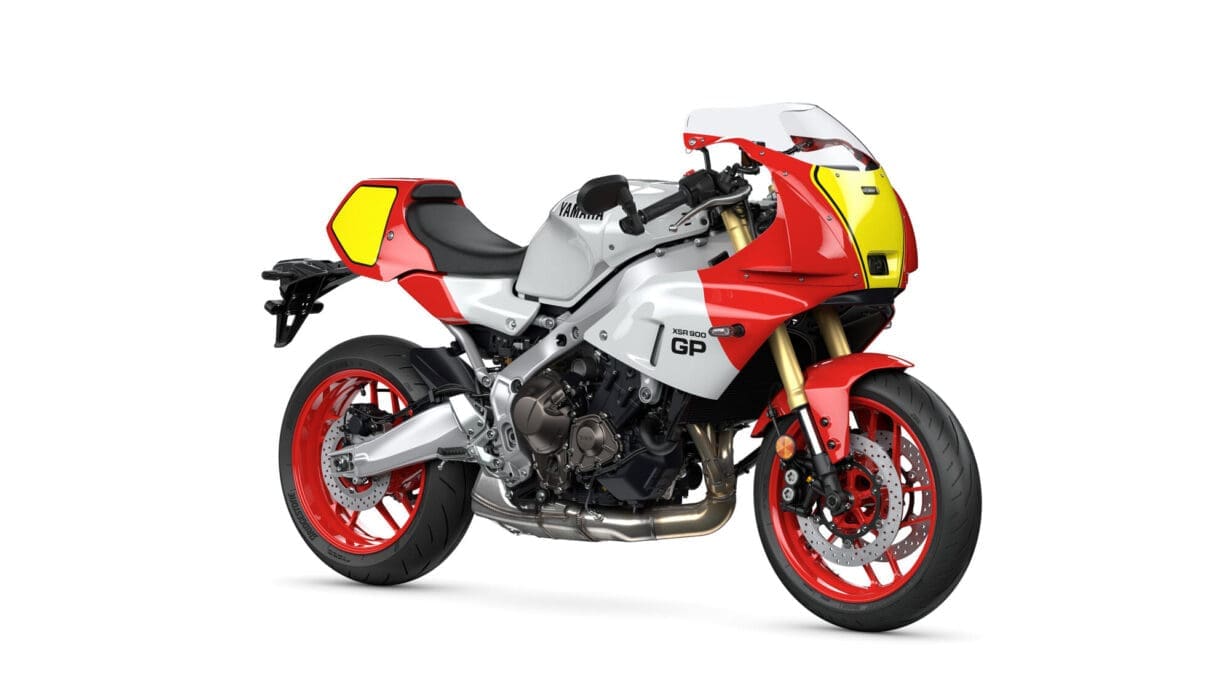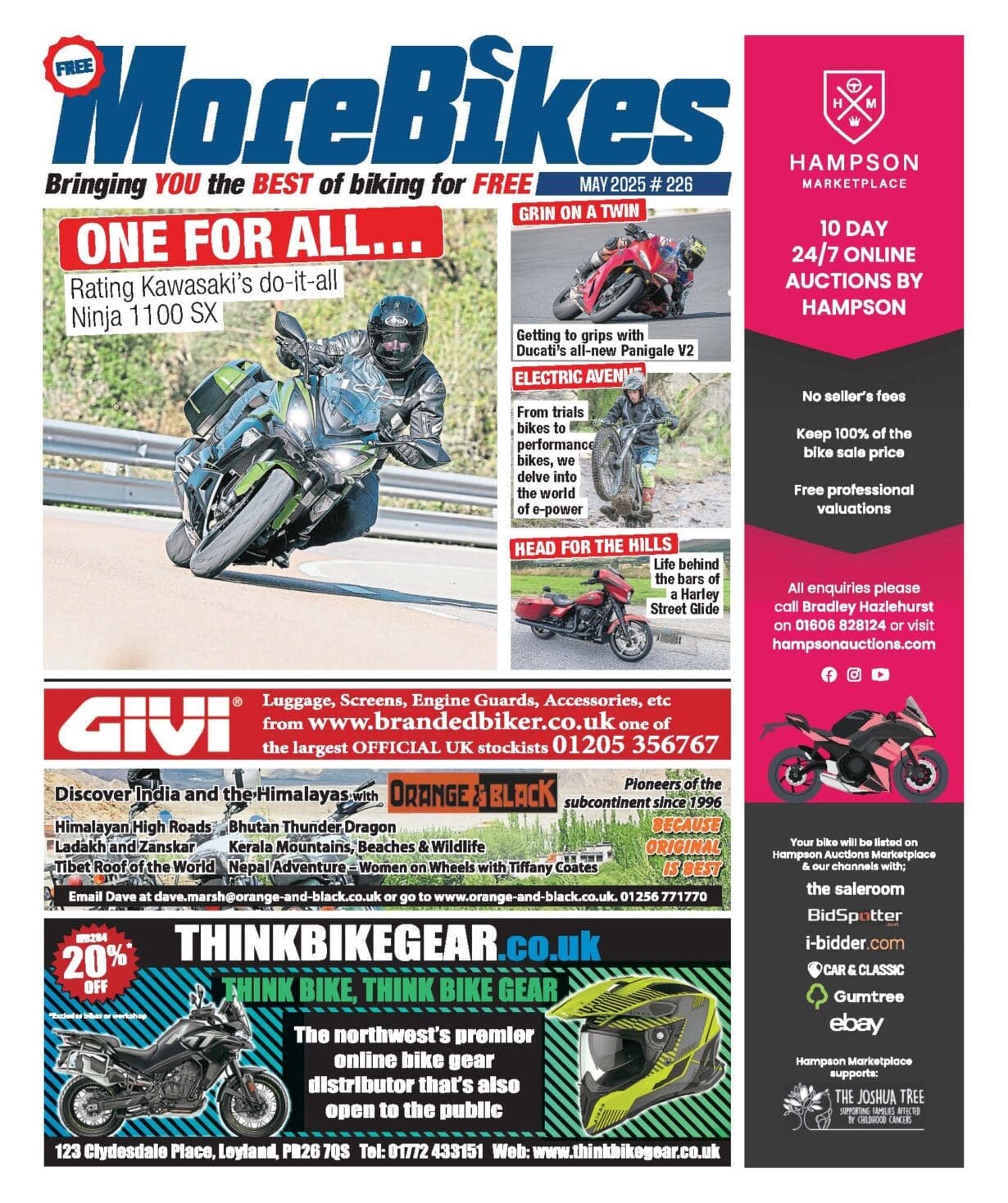Rolling the dice down the retro route, Yamaha’s hit the jackpot with its latest old-school themed offering…
The core of the XSR is Yamaha’s polished and proven CP3 triple motor that boasts a tidy 119bhp and claims 93Nm of torque to back things up. The engine is a direct crossover part with the new MT-09, and so is the multi-directional shifter and blipper system and the assist clutch.

Another shared gem is the bike’s electronic suite, meaning the XSR900 now gains a six-axis IMU and consequently comes packed with changeable traction, wheelie, and slide control, as well as alterable engine brake management and cruise control for good measure. There are also three pre-selected rider modes on tap (sport, street, and rain), plus two custom maps that are managed on the bike’s fancy 5-inch TFT dash via some box-fresh switchgears.
There are some new aluminium clip-ons that give this bike a racier look, while moving the rider’s wrists 93mm forward and 114mm lower when compared to the handlebars on the aforementioned XSR900. The pegs also bring a sportier stance and more ground clearance to the party, having been raised by 26mm and moved rearward by the same distance. As you can imagine, these changes mean the rider’s mass moves towards the front of the bike, enhancing a greater front end weight bias… no bad thing on a sportsbike. And to ensure that gain is capitalised, there’re new KYB pogos front and rear, with added length to the fully adjustable forks, while the rear shock’s spring is a little softer than the one fitted on the last XSR.
The die-cast Deltabox frame has also had a bit of a seeing to, with revised engine mounts, an altered 5mm higher headstock, and a thicker rear subframe. Unlike the MT, the GP gains a 55mm longer swingarm, which cranks the wheelbase to a whopping 1500mm and contributes towards its 200kg kerb weight (seven kilos up on the MT). It was partly necessary to accommodate the remodelled 14-litre fuel tank. A particularly nice touch is the bike’s compact, dual projector headlights that sit within the bold number boards on the front cowl and look every bit at home on the GP.
While the real hook to this bike is its refreshingly different guise, the engine is undoubtedly its number one party piece as far as hardware goes. With so much torque on tap through its crossplane triple motor, getting the front wheel staring at the sky was pretty damn easy, despite the added wheelbase. But if wheelies aren’t your thing, worry not, because as handy as this thing was with ASBO-inducing antics, it was just as capable in the handling department, too.

Tackling a mixture of roads at different speeds and with a smattering of rush-hour traffic, the XSR took everything in its stride, proving impressively agile and easily steerable when negotiating bumper-to-bumper filtering. It’s impossible to say how it compared to the MT, as I didn’t have one to hand at that very moment, but it never felt wayward or awkward to place it wherever I wanted it to be, proving a real trooper at sucking up the many imperfections in road surfaces, which included a half-mile stretch of cobbles that shook the bike and me for all we were worth. Out of town and on the faster stuff, the XSR really came into its own. As you’d expect from a bike with such a big wheelbase, it proved impressively stable on long corners, and I can’t fault the absorption of the KYB suspension. I’m normally the first to start twiddling with set ups and suchlike, but despite having that option on the fully adjustable units at either end, I never felt the need.
I liked the riding position, too. You might think that with buzzwords such as clip-ons and rearsets in the mix, the XSR would be akin to a torture device, but that simply wasn’t the case. My wrists never felt any pressure and my knees were just as chilled, with my only displeasure coming from the seat, which was on the firmer side for me.
Something less great is the feel of the front brakes. It’s not as if Yamaha has skimped on the master cylinder, as there’s a fancy, adjustable span Brembo in place, but the purchase on tap when you squeeze the lever just doesn’t translate to the discs below. I feel like a broken record for raising this point on most Yamahas, but it genuinely felt like this let the side down a little, and while I’m sure it’s nothing to do with the own-brand calipers, I reckon a more aggressive set of pads would absolutely transform the stopping power of this thing. That said, at least the non-switchable ABS wasn’t kicking in every two seconds, which isn’t to be sniffed at these days. In fact, the entirety of the tech on the machine proved fantastic on road and track.
The £12,506 GP offers plenty of appeal in the looks department, but for the sake of sexiness, Yamaha did not compromise the integrity of the machine. Under that fancy frock is a hardcore hustler that can pull the pin whenever you ask it to – and that’s why it’s right up my street.
Action Photo/Words: ANT Productions


